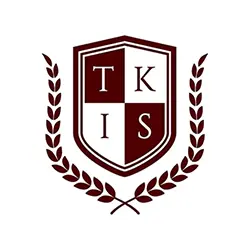Introduction to Senior General Secondary Education (HAVO)
Senior general Secondary Education, commonly known as HAVO, stands as a pivotal stage in the Dutch education system, bridging the gap between primary education and higher learning opportunities.
HAVO, or Hoger Algemeen Voortgezet Onderwijs, is designed to prepare pupils for tertiary education, often leading to professional studies.
In the Dutch educational pathway, HAVO holds a significant place, offering a comprehensive curriculum that balances general secondary subjects with specialised options.
This pathway enables students to develop a broad understanding of both theoretical and practical aspects essential for their future academic and professional pursuits.
The programme typically spans five years, commencing when students are around 12 years of age and concluding at approximately 17.
The curriculum is structured to provide an in-depth exploration of core subjects, such as mathematics, languages, science, and social studies, alongside elective subjects tailored to individual interests and career aspirations.
This flexibility in subject choice allows students to tailor their education to align with both personal interests and future vocational pathways.
In the Netherlands, admission to senior general secondary education requires students to complete primary education, often assessed through a combination of nationwide standardised tests and teacher recommendations.
The decision is profoundly influenced by insights from primary school educators, who guide students and parents in choosing the most suitable educational pathway.
This ensures that pupils are positioned in an educational environment where they are most likely to thrive and excel.
Geographical accessibility plays a crucial role in the choice of school for students entering HAVO.
The Netherlands boasts a well-distributed network of secondary schools, allowing families the flexibility to choose institutions that are both convenient and aligned with their educational preferences and values.
Moreover, many school communities foster an environment that encourages cultural understanding and internationalisation, reflecting a commitment to preparing students for a globalised world.
In conclusion, senior general secondary education (HAVO) offers a robust educational framework that equips students with the necessary skills and knowledge for future academic achievements and career success.
The strategic integration of core and elective subjects within its curriculum not only enriches the learning experience but also positions HAVO as a cornerstone of Dutch secondary education.
As an online institution, Thomas Keith Independent School aims to emulate these principles, providing a comprehensive and adaptable secondary education to our students.

Structure and Curriculum of HAVO
Senior General Secondary Education (HAVO), a pivotal education level in the Netherlands, offers a curriculum designed to bridge the gap between vocational paths and higher academic pursuits.
This educational pathway caters predominantly to students aged between 12 and 17 years.
The HAVO programme typically spans five years and is renowned for its comprehensive approach, blending both practical and theoretical learning.
The curriculum structure of HAVO is meticulously crafted to provide a robust foundation in various subjects.
Core subjects such as Dutch, English, mathematics, and science form the integral components of the curriculum.
Additionally, students have the opportunity to select electives that align with their interests and future aspirations.
These electives often include humanities, social sciences, and practical art-related courses, catering to a wide array of student preferences.
A unique aspect of the HAVO curriculum is its dual emphasis on general competencies and subject-specific knowledge.
Students are encouraged to develop skills in critical thinking, problem-solving, and effective communication, ensuring their preparedness for further education or entrance into the workforce.
The structure of the HAVO curriculum allows for flexibility and choice, permitting pupils to tailor their educational journey according to their strengths and career intentions.
Furthermore, assessments in HAVO are conducted through a combination of continuous evaluation and centralised examinations, ensuring a balanced appraisal of student capabilities over the course duration.
This systematic evaluation process equips students with a recognised HAVO diploma, a credential that validates their readiness for higher education or vocational training.
In conclusion, the structure and curriculum of HAVO within senior general secondary education provide an intricate balance of theory, practical skills, and student-led learning, setting the stage for diverse career or educational pathways.
At Thomas Keith Independent School, we understand the importance of HAVO’s rigorous curriculum and strive to emulate these structured learning experiences, ensuring our students grasp essential academic and life skills.
Admission Requirements for HAVO
Admission to the Senior General Secondary Education (HAVO) in the Netherlands requires meeting specific criteria to ensure students are adequately prepared for the complexity and demands of this educational pathway.
The primary admission requirement for HAVO is the successful completion of primary education, where students typically receive advice based on a centralised test and teacher recommendations.
This advice, which is provided in the final report of primary school, plays an influential role in determining the best educational pathway for each pupil, whether it leads to HAVO or another form of secondary education.
Secondary education in the Netherlands, particularly the HAVO pathway, is designed to accommodate students between the ages of 12 and 17.
A crucial aspect of admission requirements is the assessment of a student’s performance and aptitude, primarily through the Eindtoets, a national standardised test taken at the end of primary education.
This test evaluates key competencies in subjects such as Dutch language, mathematics, and occasionally world orientation, serving as a benchmark for preparedness for secondary education.
Geographical accessibility also influences admission, as each school has a capped number of seats, causing enrolment at popular sites to be highly competitive.
Prospective students often undergo additional evaluations or interviews by the school board to assess their suitability for an HAVO program, which may include reviews of academic performance and motivation.
The entrance to HAVO serves as a critical juncture, building a foundation for future educational opportunities, including further education or professional training.
As the focus on individual aptitude becomes more pronounced, HAVO’s admittance process establishes a structured entry point that aligns students with an educational trajectory that optimally matches their skills and potential.
Differences Between HAVO and VWO
Senior general secondary education in the Netherlands is articulated through two primary pathways: HAVO (Hoger Algemeen Voortgezet Onderwijs) and VWO (Voorbereidend Wetenschappelijk Onderwijs).
Understanding the differences between HAVO and VWO is crucial for both students and parents when making educated choices regarding secondary education.
HAVO, as a senior general secondary education, typically spans five years and is designed to prepare students for higher professional education (HBO).
In contrast, VWO is more academically rigorous, lasting six years, and serves as a preparatory path for university education.
The additional year in VWO accommodates a more extensive curriculum, which includes subjects crucial for university admission.
From a structural perspective, the educational content of VWO is more aligned with scientific and theoretical subjects.
This pathway emphasises disciplines like advanced mathematics, sciences, and classical languages, ensuring that students have the foundational knowledge necessary for university-level challenges.
On the other hand, HAVO offers a broad spectrum of subjects but with slightly less depth compared to VWO, allowing students to engage in more hands-on and practical activities.
The admission level and requirements differ, with primary school advice playing a crucial role in determining the appropriate track for each student.
Students who excel in primary education with strong recommendations generally enter the VWO programme.
Conversely, students with a solid educational performance may find HAVO more suitable.
While both HAVO and VWO culminate in a government-regulated examination, the learning outcomes differ, mirroring the distinct paths they pave in further education.
Successful completion of HAVO allows graduates to seamlessly transition into vocational higher education, whereas VWO provides direct access to university programs.
Ultimately, the choice between HAVO and VWO depends on the student’s academic inclinations, future aspirations, and the recommendation from their primary education experience.
Both tracks offer comprehensive curricula but differ significantly in their approach and intended educational outcomes, thus ensuring that students are placed on the optimal path for their academic journey.
Internationalisation and Cultural Aspects
Internationalisation plays a significant role in senior general secondary education, particularly in systems like HAVO and VWO in the Netherlands.
This focus on internationalisation aims to prepare pupils for an increasingly globalised world, offering them opportunities to gain international experiences and perspectives.
Incorporating internationalisation within senior general secondary education involves several initiatives.
Schools often offer exchange programmes that allow pupils to study abroad, providing them with unique cultural insights and experiences.
Additionally, foreign language instruction is emphasised, with students encouraged to learn multiple languages to enhance their global communication skills.
Cultural aspects in senior general secondary education are equally crucial.
Diverse cultural studies are integrated into the curriculum, allowing pupils to explore and understand various cultural traditions and histories.
This approach not only broadens students’ horizons but also fosters a sense of global citizenship and prepares them for international environments.
Moreover, senior general secondary education often includes international cultural events and projects.
These activities help pupils appreciate diversity and develop intercultural competence, essential skills in today’s interconnected world.
At Thomas Keith Independent School, we recognise the importance of these aspects and strive to incorporate internationalisation and cultural education into our teaching methodologies.
This ensures our pupils are well-prepared to navigate the complexities of modern society and succeed on a global stage.
Geographical Accessibility and School Communities
Geographical accessibility plays a crucial role in ensuring that senior general secondary education, such as HAVO and VWO, is available to students throughout the Netherlands.
The distribution of schools is strategically organised to ensure that pupils from various regions can access quality education without significant travel barriers.
This geographical planning helps maintain an equitable education system where all learners have the opportunity to participate in senior general secondary education.
School communities are a vital component of the education landscape, significantly impacting student experience and learning outcomes.
These communities foster a sense of belonging and collaboration, essential for the holistic development of each pupil.
By integrating local cultural aspects and promoting inclusivity, school communities enhance the learning process and prepare students for broader societal engagement.
In our online setting at Thomas Keith Independent School, we strive to emulate these supportive environments and community-driven approaches, aiming to offer an enriching educational experience to each student, regardless of location.
Organisation of the School Year and Day
The senior general secondary education system is designed to provide structure and consistency to students at Thomas Keith Independent School.
Understanding the organisation of the school year and school day is vital for parents and students alike.
In the context of secondary education, particularly senior general secondary education, the Dutch education system follows a well-defined calendar.
Typically, the school year begins around late August or early September and concludes in June or July.
This allows for a summer holiday, giving pupils much-needed rest before the new academic year commences.
The school year is divided into terms, usually three or four, with breaks in between to aid pupil rejuvenation and learning continuity.
This structure supports the educational framework by balancing knowledge acquisition with necessary downtime.
The organisation of the school day within senior general secondary education is equally strategic.
Lessons typically start around 8:30 a.m. and can end between 3:00 p.m. and 4:00 p.m., ensuring that students have adequate time for both academic and extracurricular activities.
Each instructional period ranges from 45 to 60 minutes, structured to maintain student engagement and effectiveness in learning.
The Dutch school system embeds flexibility while maintaining a core curriculum, allowing schools like Thomas Keith to tailor schedules that best fit educational programs.
Incorporating a blend of core academic learning and practical subjects, the school day is carefully planned to meet educational objectives.
Overall, the organisation of the school year and school day in senior general secondary education aims at fostering a holistic learning environment.
This environment helps students develop a range of competencies, preparing them for further educational pathways or the professional world.
Parents looking for comprehensive educational planning will find that this flexible yet structured approach provides an optimal learning experience.
At Thomas Keith Independent School, understanding and leveraging the organisation of the school year and day is crucial for achieving high academic standards and student success.
Teaching Hours and Statutory Norms
In the context of senior general secondary education, teaching hours and statutory norms form the backbone of educational structure and planning.
These norms not only dictate the minimum hours a student must be engaged in academic activities but also ensure that a balanced and comprehensive curriculum is delivered effectively.
In senior general secondary education, particularly within the Dutch education system, there is a prescribed statutory minimum of teaching hours that each school is required to adhere to.
This ensures a uniform level of education across different institutions, maintaining a standardised educational framework.
The statutory norms are aligned with the International Standard Classification of Education (ISCED) to facilitate global educational comparisons and maintain consistency.
Teaching hours are carefully calculated to include both core academic subjects and supplementary activities, fostering a well-rounded education
The average teaching week typically spans five days, with a blend of theoretical and practical learning to cater to diverse learning needs and interests.
This includes not only a focus on compulsory subjects such as mathematics and science but also encourages a broad selection of elective subjects to enrich student experience and knowledge.
These teaching hours encompass classroom instructions, practical learning sessions, and other pedagogical arrangements that are crucial for intellectual and social development.
Teaching hours are strategically partitioned across different sessions throughout the day, optimising student engagement and learning efficiency.
Moreover, these norms are regularly reviewed by education authorities to align with contemporary educational needs and societal demands.
This structured approach ensures that students within senior general secondary education are adequately prepared for both higher education pathways and real-world challenges.
In summary, teaching hours and statutory norms play a pivotal role in structuring senior general secondary education, ensuring that educational delivery is both effective and equitable.
This thorough approach ensures pupils and students receive quality education that aligns with both national standards and international expectations.
Pathways After HAVO: Higher Education and Career Opportunities
Senior general secondary education, commonly referred to as HAVO, offers a variety of pathways for students keen to pursue higher education and diverse career opportunities.
After completing the HAVO programme, students are well-prepared to enter higher education institutions, particularly universities of applied sciences known as HBO (Hoger Beroepsonderwijs).
The transition from HAVO to HBO is seamless and commonly pursued by students seeking specialised professional education.
HAVO’s structured curriculum, which includes courses in maatschappij (society) and natuur (nature), equips students with a balanced knowledge base, making them competitive candidates for advanced studies.
The Dutch education system ensures that the HAVO diploma is acknowledged for entry into these institutions, providing students with access to an array of bachelor’s degree programmes.
Unlike students from the VWO (pre-university education), HAVO graduates typically do not directly enter university-level academic programmes.
Instead, the HBO is the next logical step, offering pragmatic and theory-integrated learning geared towards practical professional applications.
Furthermore, HBO is a recognised pathway to further university studies if students wish to pursue academic advancement after completing their bachelor’s degree.
Career prospects after HAVO and HBO are equally vibrant, with opportunities in fields such as business management, healthcare, engineering, and the creative industries.
The focus on vocational training and practical knowledge in HAVO ensures that students are not only theoretically competent but also industry-ready.
This dual emphasis on theory and practical learning means HAVO graduates can enter the workforce equipped with skills that are immediately applicable.
For prospective students, choosing HAVO is not merely about completing secondary education but also about laying a robust foundation for lifelong learning and professional success.
Thomas Keith Independent School acknowledges the growing demand for senior general secondary education and actively provides insights into the pathways leading from HAVO to both educational and career opportunities.
By understanding the comprehensive nature of HAVO, students and parents can make informed decisions regarding future educational and professional pursuits.

Conclusion: The Role of HAVO in Dutch Education
Senior general secondary education, particularly HAVO, plays a pivotal role in the Dutch education system by preparing students for a seamless transition into higher education or vocational training.
The HAVO pathway is a significant component of the Dutch secondary education structure, providing students with the necessary qualifications to pursue higher vocational education, known as HBO, which stands for higher professional education in the Netherlands.
This pathway is particularly advantageous for students who aspire to a career-oriented education but prefer a mix of practical and theoretical knowledge.
HAVO’s curriculum is designed with a focus on providing a broad education that keeps options open for students.
It integrates both ‘maatschappij’ (society) and ‘natuur’ (nature) subjects, catering to a wide range of interests and preparing students for diverse pathways.
By offering a thorough and balanced education, senior general secondary education not only equips students with essential knowledge but also enhances their cultural and social understanding, ultimately supporting their integration into Dutch society.
The Dutch government recognises the importance of HAVO in fostering an educated workforce that can thrive in various professional environments, thus reinforcing the country’s economic and societal progress.
Therefore, senior general secondary education remains a cornerstone of the Dutch educational framework, contributing to personal growth and national development alike.




